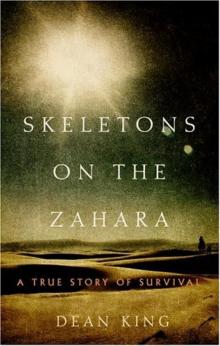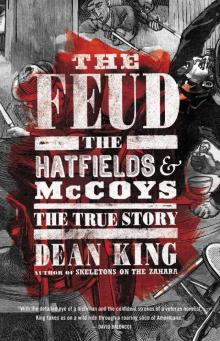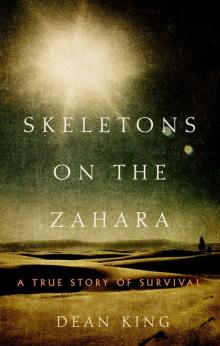The Feud: The Hatfields and McCoys: The True Story Read online
Page 31
Elias replied, “Hello, Doc. Do you think you can take me to Kentucky as easy as you did my brother, Johnse?” Elias, who had not been involved in either of the two feud events for which indictments were still outstanding and who, in fact, sometimes worked in Kentucky, was merely taunting Ellis. According to some, he called Ellis a “son of a bitch” for good measure before turning around and striking up a conversation with a passenger who was walking by. Ellis is said to have responded, “I’ll show you who’s a son of a bitch!” He went back on the train and returned with a loaded gun.
Chafin saw Ellis rush onto the platform and raise a pistol, and he shouted, “Look out, ’Lias!” The passenger with whom Elias was talking saw what was happening too and shoved Elias aside. Elias, dropping out of the way, pulled out his pistol and fired. Some witnesses would say that only one gun fired, but Chafin saw two flashes. Elias’s shot, taken in haste, was off the mark but not by much: the bullet struck Ellis’s wrist, broke it, ricocheted into his neck, severed his jugular vein, and exited through the top of his head. The wealthy timberman fell to the platform, dead before he hit.
Elias turned to Chafin. “You go home and tell dad I killed Doc Ellis and run up the railroad,” he told the boy. When Devil Anse heard what had happened, he saddled up a horse and sent Chafin to Island Creek to tell Cap. Once again, the family was called to arms. They knew where to meet Elias.10
Eventually Elias was convinced to surrender and was tried in the Mingo Circuit Court in Williamson. He pleaded self-defense.11 Rumors that Devil Anse was going to storm the town and reclaim his son circulated, but Devil Anse was no longer in charge of such operations in the family. Instead, in August 1899, Cap arranged for a successful prison break. The two brothers, aged thirty-five and twenty-one, fled the state together but parted ways to avoid attracting attention. Cap hunkered down in the Oklahoma Territory for a time. Elias hid out in parts unknown but soon tired of being away and returned to West Virginia. He was arrested, convicted of murder, and sent to the state prison. Governor Atkinson, the Republican for whom Cap had voted, soon paroled him.
IN 1902, ELIAS AND TROY went to work as special railroad agents for Baldwin’s Detectives in Thurmond, a coal boomtown on a bend of the New River. They answered to Albert Felts. (Thus, when Dan Cunningham joined Baldwin’s agency, he—the hunter of Hatfields—might well have been sent on an operation with the sons of Devil Anse.)
It was thanks in part to their outlaw father that Troy and Elias had an opportunity to work in law enforcement. The owner of Baldwin’s Detectives, William Baldwin, had once enjoyed a night of Devil Anse’s hospitality. While hunting a fugitive in the Tug River Valley, he came upon the Hatfields’ cabin after dark. Asking for a place to sleep that night, he avoided divulging his name and his business. “Well, stranger, if you can put up with fare,” Devil Anse replied, “I guess you can stay all night.” After supper, Anse showed him up to a sleeping loft. The uneasy detective slept with his pistol in easy reach. As dawn approached, Hatfield climbed the ladder and poked his head through the trapdoor. “Now, Mr. Baldwin,” he said. “I think the old woman’s got breakfast ready. If you’ll hurry down and eat, I believe I can get you away from here without you getting hurt. You know, I’ve got some bad boys. If they find you here, they may kill you.”12 After breakfast, Devil Anse showed Baldwin to the top of a nearby ridge and bade him farewell. Baldwin never forgot it.
Elias and Troy guarded trains and coal-mine paymasters for seven years. Then on July 30, 1909, they broke bad, donned masks, and held up the New River Collieries paymaster, nabbing $4,391.16 in broad daylight. It is still considered one of the boldest robberies ever committed in West Virginia. Albert Felts, suspecting them or, at least, dissatisfied with their efforts since it occurred on their watch, fired them. They then joined forces with union organizers in an ill-fated attempt to frame Felts for the robbery. They were laughed out of court. The result was that the brothers were forever out of the detective business, but they had the funds to set themselves up in the whiskey trade, a career move that would soon seal their doom.
A LITTLE MORE than five years later, the Hatfields and the Rutherfords would be at the center of another violent episode, a last gasp of the Hatfield-McCoy feud and one that again raised the specter of the old mountain justice. The March 30, 1902, New York Times reported a multiple murder under the headline “Hatfield Feud Renewed.” Apparently, John Rutherford, a detective, had obtained a warrant for the arrest of Ephraim Hatfield, who was wanted in South Carolina but hiding out in Pike County at his parents’ house. (Ephraim’s father, Thompson, was a double first cousin of Devil Anse’s, and his mother, Mary, was a McCoy.) Thompson, sixty-two and a veteran of Yankee Bill’s militia and of the Kentucky Mounted Infantry, was dangerous, and so was his son. Rutherford enlisted the help of Harry Watts. Just why Watts, who was the wealthy and well-liked proprietor of the Palace Hotel in Williamson, a man known throughout southern West Virginia, would want to assist on such a dangerous mission is unclear. The two rode out to the Blackberry Creek home of Ephraim’s parents and broke the door down. As they were subduing the thirty-year-old fugitive, Thompson managed to grab his gun and took aim at the intruders. Watts and Rutherford pulled their triggers at virtually the same time that he did. Fire flashed from gun barrels, a hail of deadly metal spewed, and a blast rocked the cabin, which filled with acrid smoke. (One report said that a thirteen-year-old girl in the cabin wielded a gun too.) When the smoke cleared, Ephraim’s wife and children found all four men dead or dying.13
EVEN WITH SUCH VIOLENCE seemingly part of their DNA, something about the fierce, independent ways of the Hatfields, their straight-up manner of bargaining with larger powers, and their collective will to succeed—or, rather, not to be defeated—kept the clan speeding forward.
Johnse had been sentenced to prison for life, but a life sentence was a relative thing—relative to the influence you could bring to bear on the system. Some, like Alex Messer, would serve a life term (he died in the Kentucky State Penitentiary in Eddyville in 1923, at the age of eighty-five), but others, like Johnse, found ways to shorten their stays. When an inmate armed with a fork attacked the prison warden, hurled him to the floor, and stabbed him in the neck, Johnse managed to wrestle him off the warden. The inmate, described as a “burly Negro giant,” then turned on Johnse, who slashed his neck with a penknife, cutting his jugular and killing him. Although it was another grisly murder, Johnse’s defense of the warden made him a hero, and the warden campaigned for his pardon.
It was Johnse’s bad luck, however, to have a temperance advocate in the Kentucky executive office, J.C.W. Beckham, who repeatedly refused to pardon him. Then Johnse, who was suffering from inflamed kidneys caused by Bright’s disease, got a break. During a hiatus in Beckham’s governorship, while he was traveling out of state, lieutenant governor William Thorne, who had different views on the matter, took over for a brief stretch. Knowing that Johnse’s wife, Roxie, had died, leaving their two small children without a parent to look after them, and having Johnse’s promise to stay out of Kentucky as well as a petition requesting his pardon signed by the McCoys, who wanted to put the feud behind them once and for all, Thorne pardoned Johnse.14
“The McCoy and Hatfield people, parties to the feud, after twenty-six years desire peace,” Thorne wrote. “Both sides of the old feud are anxious to cross out all old scores and settle their differences, and every law-abiding man should be only too glad to render whatever assistance he can to bring these results about.”
Four years later, the Louisville Courier-Journal reported the gruesome demise of Bill Tom Hatfield. He was captured by enemies across the Tug Fork, according to the stories, taken into the Kentucky woods, tied to a tree, and left to freeze to death. Until then, Bill Tom, one of the least known feudists, had enjoyed good luck, having fought the battles but escaped unscathed. Found alive but not before several fingers and toes had frozen solid, he was taken to Louisa, where both legs had to be amputated, killing him. “Membe
rs of the clan are vowing vengeance,” the Louisville Courier-Journal reported.
It was not until after the New York Times also ran the story that a letter arrived at the offices of the Courier-Journal pointing out that the Tom Hatfield in question was a distant cousin of the feuding Hatfields. This Tom Hatfield, the thirty-year-old deaf-mute son of a Baptist minister, had been robbed of a gold watch, hundreds of dollars, and his coat before being bound and left to freeze to death. Rescued, he had been unable to identify his assailants because he could not speak or write. Bill Tom Hatfield, on the other hand, would go on to live to a ripe old age, dying of natural causes at his home on the Tug more than three decades later.15
Coda
March 4, 1913
Agusty March wind riffled the Kanawha River as it coursed through the heart of Charleston. Hands secured top hats on the heads of those waiting outside the state capitol to hear the new Republican governor, the youngest governor ever elected in West Virginia, deliver his inaugural address. A thirty-seven-year-old doctor from the southern reaches of the state, he traveled the route of his inaugural parade in an automobile—a first for West Virginia. With him rode the hopes of the Progressive Era, blossoming across the nation, with its promise of social and political reform. On this ceremonial day, however, West Virginia was in crisis. In the Kanawha coalfields, not twenty miles away, a state of war existed, and martial law reigned.1
The man chosen by the voters to see the state through the hostilities, which had already lasted a year and crippled the energy industry, had been educated at three institutions of higher learning and had risen through the halls of government to become the president of the state senate before being elected governor. He was Henry D. Hatfield, a son of the feudist Good ’Lias and a nephew of Devil Anse.
Though a New York City–educated medical doctor, Henry Hatfield was solidly a man of the people. The son of a Confederate soldier, he had been born on lowly Mate Creek on the Tug River, at the epicenter of the nation’s most notorious feud. The hostilities that his family had been involved in had been broadcast far and wide and were a black eye to his state. But at the same time his tough background seemed to be an asset.
Just a year before his election, twenty miles down the Kanawha from the state capital, in the town of Cannelton, his cousins, Devil Anse’s sons Elias and Troy, private detectives turned whiskey dealers and saloon owners, had fought a vicious gun battle in a territorial dispute. An Italian rival, Ottavio Vagliozzo, had fatally wounded the brothers before being riddled with bullets himself. Born into violence, Troy calmly told those who found him dying, “You need not look for the man who did this, he is dead.”2
Even as Henry Hatfield’s campaign for office was kicking off, another cousin, Devil Anse’s son Willis, a personnel officer for a mining concern, shot and killed a pharmacist who had berated him and refused to serve him because he was a Hatfield.3
Despite the fact that Good ’Lias was a feudist, Henry and his brothers had thrived. The oldest, Greenway, served as the sheriff of Mingo County, having taken over from Doc Keadle. Greenway was elected sheriff twice on the Republican ticket (and again later as a Democrat) and was a formidable political ally of Henry’s.4 But even some of the non-feuding Hatfields seemed destined for extreme violence. In August 1914, Greenway would hunt down the infamous Glen Alum payroll robbers, five men who had waylaid and murdered three payroll guards. In an all-night gunfight, Greenway and his men would kill all of the bandits, blasting them with dynamite and spraying them with bullets.
A GRADUATE OF FRANKLIN COLLEGE at age fifteen and of medical school at the University of Louisville at nineteen, Henry was one of the most visionary and most distinguished West Virginians of his generation. After he received a second medical degree for surgery at New York University in 1904, he worked as a railroad surgeon, a mine physician, and a county health commissioner. Because the southwestern part of the state sorely lacked health facilities, he became an activist, appealing to the legislature and gaining funds for a hospital, Miners Hospital No. 1, in the town of Welch before being elected to the state senate himself.
In 1913, in the coal-rich gorges of Cabin Creek and Paint Creek, thousands of desperate miners and their families, having fought mine guards in a yearlong struggle between organized labor and management, had been driven from company-owned houses and were living in camps. For the miners out on strike, it had meant months of hunger, illness, hardship, and violence. Governor William Glasscock, Henry’s predecessor, had imposed martial law three times. Henry estimated that more than 30,000 men were affected by the strike, which had cost the state many lives and in excess of two million dollars.
In his inaugural address, Henry—steeped in the collective wisdom of his family’s experience and buttressed by the courage, conviction, and self-reliance of the mountaineer—revealed himself to be an eloquent yet humble statesman with a bold outlook. “In the matter of progress,” he said, “we must place our state where she rightfully belongs as a peer of any other state in the Union.” A Republican and an advocate of women’s suffrage, he wished to extend the “progressive principles” inspired by Lincoln.5
The new governor’s chief concern was correcting the unfair dynamics of the state economy. West Virginia contained more coal than Ohio, Pennsylvania, and Virginia combined and ranked second among the states in coal production, but it was only thirty-fourth in the value of its manufactured products. The state powered the great iron and steel industries, but its coal operators made too little money because of the long railroad haul to market. The bulk of the coal consumed in West Virginia was used by locomotives carrying the raw material out of state.
Other natural resources included more than 300 million tons of iron ore, seemingly unlimited limestone, glass sands, and clays and shale for making brick and tile. The state’s petroleum was first-rate, and it produced vast quantities of natural gas. The problem was that more than 80 percent of the fuel and raw materials was used outside its boundaries.
Henry’s vision for the state, which he believed held the most beautiful mountain scenery anywhere, included “good macadam roads… filled with admiring tourists.” He wanted to protect the common laborer as well as the businessman. He would rein in the government and put an end to corrupt voting practices. He pronounced the state’s school system “bunglesome,” declaring that boys and girls in poor rural school districts should have the same advantages as those in wealthy areas. Among his accomplishments would be progressive health-care legislation and the nation’s first workers’ compensation laws.
But first, on the day of his inauguration, Henry announced that he planned to go into the Paint Creek and Cabin Creek areas to investigate conditions. Although his security advisers warned him that his life would be in danger, Henry, who would serve as a chief surgeon in the Army Medical Corps in World War I, packed his black medical bag and at dawn the next day headed alone into the strike zone. When asked later why he went, he replied simply, “They needed a doctor.”
Based on this firsthand experience, and ignoring death threats and schemes to kidnap his daughter, Governor Hatfield would impose a contract on the warring factions. Neither labor nor management got everything it wanted, but he achieved a break in the Mine Wars. It was an uneasy truce, but it held. He had created a third side to the dispute—the Hatfield side. And this time, at long last, the family name stood for peace.6
Epilogue
Mine Is the Vengeance
From the extensive reporting of the World’s T. C. Crawford, the Sun’s John Spears, the Herald’s James Creelman, and many others, the Hatfields became celebrities of sorts, and they were happy to pose for photographs. In one sitting, Devil Anse, Cap, Johnse, and French Ellis each pose wearing Mexican bandito stage props, including a felt sombrero with four large stars embroidered on the underside of the bill. Bearded Anse holds a Winchester across his lap. Cap and Johnse, both with mustaches drooping over their upper lips, Johnse a thinner version of Cap, hold pistols with gun barrels crossed
on their chests. Ellis, who would later die from a shotgun blast, holds a rifle with its butt resting on the floor and clenches a large cigar between his teeth.1
By all accounts, Devil Anse in many ways lived a charmed life. He hunted his fill, enjoyed more than his fair share of children and business success, and was married to the same woman for half a century. Just a few days before the murder of Elias and Troy, his friend and Civil War compatriot the Hardshell Baptist preacher “Uncle Dyke” Garrett baptized him, at the age of seventy-two.
But Devil Anse and Vicey were terribly shaken by these latest deaths in the family. At the double funeral on Main Island Creek, Vicey, a regular churchgoer, was joined by her seven remaining sons—Johnse, Cap, Bob, Elliott, Joe, Willis, and Tennis—who themselves made a public confession of their faith in God and promised Uncle Dyke that he could baptize them.2
The brothers had done remarkably well, all things considered. After serving six years of his life sentence, Johnse went on to become a land agent for the U.S. Coal and Coke Company in and around Logan County. Cap, who should long since have died in a hail of bullets, eventually returned to his native hollows. In 1908 he went to Tennessee and studied law for six months and then moved back to Logan County—where his younger brothers Joe and Tennis served at various times as sheriff and hired him as a deputy sheriff. He later started a law firm with his son Coleman, who was blind, and they were eventually joined by Coleman’s daughter Aileen, who became one of the first female practicing attorneys in southern West Virginia. Bob, the third son in the family, became a merchant and wealthy property owner. Elliott, the fourth son, studied medicine, graduating in 1898 from City College of Louisville, Kentucky. He practiced in Charleston.3

 A Sea of Words
A Sea of Words Skeletons on the Zahara
Skeletons on the Zahara The Feud: The Hatfields and McCoys: The True Story
The Feud: The Hatfields and McCoys: The True Story Every Man Will Do His Duty
Every Man Will Do His Duty 9/11...The Tragic Story of the Day that Changed America: The Terror, The Horror and The Heroes
9/11...The Tragic Story of the Day that Changed America: The Terror, The Horror and The Heroes White Slave Cop
White Slave Cop Skeletons on the Zahara: A True Story of Survival
Skeletons on the Zahara: A True Story of Survival